- Home
- Rabindranath Tagore
The Boat-wreck Page 28
The Boat-wreck Read online
Page 28
Despite their vulnerability to the opprobrium of the world in the early twentieth century context, many of Tagore’s other female protagonists challenge norms, speak up for themselves as individuals or even overstep the sacrosanct institution of marriage in all its inviolability when they find themselves drawn into a viable relationship that exposes the shortcomings of their own marriage by contrast. Binodini in Chokher Bali, a widow, falls in love with a married man, Charulata in Nashtaneer, and Bimala in Ghare Baire are married women in love with other men, and Mrinalini in Strir Patra decides to break away from her marriage and set off on her own. Both the Brahmo and the Hindu girl in Noukadoobi pale by contrast, embodying and enacting stock ideas of blind marital devotion and passive acceptance of the heartlessness of love. They are conformist and flaccid, and cannot negotiate life on their own terms.
A story is a story that may just be about some run-of-the-mill people in the backdrop of a series of freakish happenings. But does the end of the novel not suggest that the education and enlightenment of Brahmo girls only deserves this kind of privation while the fierce and irrational wifely loyalty of uneducated, innocent, chaste child-brides in the Hindu community leads to virtue rewarded in the form of an equally devoted husband? Or does the end only delineate the erratic, arbitrary manner in which people find marital happiness while those who should really, logically have found it remain solitary and unloved? The ostensibly happy ending of the novel does not seem to suggest the latter. The seekers and achievers of marital bliss are canonized as votaries of a conjugal love that they had lost all too soon but found again. While their grand finale is depicted in ceremonious detail, all other love, affection and respect that we get to see in the novel do not seem to deserve a follow up but can be callously dispensed with in the end.
Milan, Ghunghat, Noukadoobi:
The Novel and Its Film Adaptations
Shoma A. Chatterji
Noukadoobi or The Boat-wreck is the story of a boat-wreck on a night of storm, rain and thunder that throws the lives of the four main characters out of gear, changing the relationships into something radically different from what the original plans were. This is a novel with multiple layers pegged to a natural disaster which is as much a physical reality as it brings out several sociological, metaphorical and emotional truths relevant to the period it is set in. The boat-wreck is a metaphor symbolizing the tricks destiny plays on the lives of four characters unwittingly trapped in situations they can neither explain nor come out of without inflicting some hurt somewhere to someone.
Tagore’s Noukadoobi was written in 1906. Tagore uses a quadrangular love story to make a strong social indictment of the time (a) on the institution of arranged marriages forced by dictatorial fathers on their obedient, duty-bound children; (b) on the misguided belief in horoscopes to match the pair ideally suited to strike an arranged marriage; (c) on the patriarchal dictates that deny women the truth even when they deserve it; (d) on how lives of young men and women can be destroyed because during the wedding rituals they might not have even seen each other’s face; and (e) to establish that one boat-wreck can destroy all preconceived, socially conditioned arrangements with one stroke.
Scholar Kaustav Bakshi writes: ‘I was rather disappointed with this Tagore novel, for it is perhaps the weakest of his prose-fictions in terms of plot. The plot turns on too many glaring coincidences, much in the manner of several Dickens or Hardy novels. Again, the later part of the novel where Kamala almost mushily sentimentalizes on her victimization is simply nerve-racking. At times,Noukadoobi seems to read more like a Sarat Chandra novel than a Tagore novel.’1 But this writer begs to differ. The novel might seem to be too full of coincidences, but the basic arguments it puts across bear historical and social relevance to this day. The comment on Kamala being ‘mushily sentimental’ is undercut by the fact that she represents the child-bride of that time, belonging to a Hindu family, who can hardly write, is confused about her marital status because the man she believes to be her husband avoids her.
Tagore’s Noukadoobi is set in the late nineteenth- and early twentieth-century India, an age of resurgence and reformation, but still soaked in ideas that were decidedly patriarchal, with women being governed by customs and religious mores prescribed/proscribed by a conservative Brahmin class which often followed the dictates of Manusmriti that was taken more or less as a guidebook to a divine code of conduct – especially for women.
The reactionary forces of the conservative society were antagonistic to the social reformers and liberal philosophers. Although the Brahmo Samaj2 proposed a reformation of the overriding Brahminism by eliminating rituals and meaningless codes of conduct, the decisive verses of Manusmriti, the epics and folklore promulgated by patriarchy through the ages were internalized by women. The sacrifice of Sita and devotion of Savitri fired their imagination and came to shape their role models.3 Noukadoobi raises questions on the very institution of marriages arranged by elders in total disregard of the likings and emotions of the young couple and, that too depending on the matching of horoscopes. This was a golden rule followed in precept and practice by Hindus, mainly belonging to the upper castes. The Brahmo Samaj tried to go against this precept and establish more progressive rules, demonstrated by Tagore in the novel through Hemnalini and her father Annada-babu.
Among marriage rituals within the Bengali Hindu community, there is one significant ritual that makes it mandatory for the bride and groom to look into each other’s eyes three times. This is called shubhodrishti that translates as ‘the fortuitous look’. However, young men forced into marriages by their dictatorial male elders often avoided looking at the bride’s face during the ceremony. It is also true that very young brides looked away during shubhodrishti because they were too shy to look into the eyes of a much older stranger and that too in front of all those who would be watching. The confined and closed upbringing of Bengali Hindu girls during the time portrayed in the novel made it natural for Ramesh not to have looked into his bride’s eyes because he was in love with Hemnalini. One has no inkling about whether the original bride, Sushila had looked into his eyes or not. There is also no explicit detailing in Noukadoobi about whether the shubhodrishti ritual took place at all during a very hurried and hasty marriage ceremony of either couple as Kamala also does not know what her husband looked like. She takes it for granted that Ramesh is the man she was married to.
Noukadoobi offers a glimpse of early 1900s Indian society, with its beliefs and customs. Quite a few have remained unchanged among the Hindu community. Parents still arrange matches for their children. Many families still believe in the sanctity of the horoscope to be matched before a marriage is fixed. Many young women and even some men today in India either do not have a say on who they wish to marry, when, why and how or do not wish to take this serious decision. The only thing that has changed is that the bridegroom today does see the face of his bride and vice versa. Courtships are common once a match is fixed.
Celluloid interpretations of Noukadoobi
Noukadoobi is the most cinema-friendly of Rabindranath Tagore’s stories. It has elements of mainstream Indian cinema: It is filled with dramatic coincidences, love triangles, an accident, and even a villain. The story has been placed on celluloid several times including three times in Hindi: Milan (1946) directed by Nitin Bose with Dilip Kumar, Ghunghat (1960) directed by Ramanand Sagar with Bina Rai, Asha Parekh, Pradeep Kumar and Bharat Bhushan, and Rituparno Ghosh’s Noukadoobi which was dubbed into Hindi as Kashmakash. Bengali versions came out in 1932, 1947 and 1979. Rituparno Ghosh’s screenplay is different. One common thread that binds the three versions together is the wonderful musical score, the lyrics and the presentation, each with different music directors, lyricists and singers, distinguished for their contribution in the time they belonged to.
Milan was cinematographer-turned-director Nitin Bose’s first directorial venture for Bombay Talkies after he shifted from New Theatres, Calcutta to Bombay. It marked the debut of Dilip Kum
ar under the Bombay Talkies banner after his debut in Jwar Bhata in 1944. Later, when he became one of the greatest actor-stars of Indian cinema, he expressed his gratefulness to Nitin Bose who, he said, ‘became a friend after Milan and (he) changed the way I interpreted and studied my scripts and my roles’. The story of Milan is credited to Rabindranath Tagore in the credits of the film and the script sticks fiercely to the original story. The names of the characters are the same as in the original novel and there is a boat-wreck that leads to Ramesh’s mistaking Kamala in her bridal attire for Sushila, his bride whose face he had not seen during the wedding ceremony.
The music of Milan was composed by Anil Biswas with lyrics by Pyare Lal Santoshi, known as P.L. Santoshi, a noted film-maker and screenplay writer. Most of the female playback was by Parul Ghosh, the sister of Anil Biswas. Some lyrics were penned by Arzoo Lakhanavi. There is a timeless beauty in the lyrics, the melody created to fit those lyrics and the voice that sang them. One example is ‘Jisney banaayi bansuri, geet usi ke gaaye ja’, a slow, meandering number that blends love and the nostalgia of loss. Another incredible song is ‘Main kiski laaj nibhayoon aur kaise laaj nibhayoon’, which evokes the tug-of-war between love and faith. ‘Suhani yeh din bit jaaye’, written by P.L. Santoshi and sung by Parul Ghosh, takes one back to Kanan Devi’s immortal number ‘Toofan mail, duniya yeh duniya’ in Jawab (1942) composed by Kamal Dasgupta with lyrics by Madhur.
Ghunghat, a 1960 Gemini Studios production from the south, was directed by Ramanand Sagar and produced by S.S. Vasan had one of the best early scores by music director Ravi. Though the core storyline adhered to Tagore’s novel, it was a slender thread because many things were changed and many new characters, incidents and events were added in keeping with the ‘family melodrama’ genre Gemini Studios was famous for. It is said to have become a big box-office hit and fetched Bina Rai the Filmfare Award for Best Actress. The names of the characters are different in this adaptation and the boat-wreck is changed to a train accident which is just glossed over. But the title Ghunghat, meaning ‘veil’ in Hindi, is an apt one. Ghunghat stands for the married woman’s lajja vastra (a part of her daily wear – the end of her sari pulled over her head) which, during the marriage rituals, takes the shape of a red, zardozi veil covering her entire face and drawn down till the neck. This leads to the mistaken identity that happens in the story.
The interesting subplot of another young couple in Ghunghat, though apparently not linked to the main story, subtly achieves two significant departures. One, it juxtaposes the strong marital bond between the young couple (Minoo Mumtaz and Agha) with the aloofness that creeps in between the newly-weds portrayed by Pradeep Kumar and Bina Rai. Two, it underlines a sisterhood between the two young women.
In Milan and Ghunghat, the Brahmo-Hindu Brahmin conflict is absent because the films are in Hindi. In Ghunghat, the difference is outlined mainly through the two major female characters of Hemnalini (Lakshmi) and Kamala (Parvati) through their way of dress, their speech, manners, body language and lifestyle. The two young women follow distinctly modern and traditional lifestyles, respectively. The film effectively draws out the demerits of the ghunghat within marriage which is a metaphor for the suppression of the bride who is conditioned to accept this without question.
Rituparno Ghosh’s Noukadoobi
Rituparno Ghosh’s screenplay is different. Tagore’s story is set in 1903. Ghosh’s Noukadoobi takes the story forward to the 1920s. It opens in the upper-class Bengali home of Annada-babu, a Brahmo, where the son, a social reformer, is about to go off to England to study law, and the daughter, Hemnalini, dressed in an old-fashioned, gorgeous sari, sings Rabindrasangeet. The furniture, the portraits, the table lamps, the piano create an ambience suitable for the enactment of Tagore’s novel.
Interestingly, the film was produced by one of Hindi cinema’s most successful film-makers and producers, Subhash Ghai. He chose to make it in two versions, Bengali – Noukadoobi and Hindi – Kashmakash. Hindi dialogues were dubbed by other actors and not by the ones who played the roles in the film. The quality and synchronization of the dubbing left much to be desired because the dubbing artists probably knew nothing about Tagore’s novel, much less read it and probably delivered their lines mechanically by rote rather than out of emotions drawn from within to add to the mood of the delivery. If reports are to be believed, Rituparno was not in favour of the lines dubbed in Hindi by others as all his actors had reasonably good command over Hindi.
The credits say that the film is ‘inspired’ by the Tagore novel because Rituparno took the original story and wove in it with his own inputs – cerebral and emotional. Though he remains faithful to the Tagore novel, he twitches the authorship. He presents the story as if it is written by someone else because Tagore, through his songs, music and photographic portrait as a young man, makes his powerful presence felt through the film as if he is one of the characters in the film. He is the centre of Hemnalini’s universe.
The film opens with Hemnalini, her back to the camera, singing a Tagore number ‘Khelaghar bandhte legechhi’. This forms the theme music of the film, suggesting that any home is as fragile as a toy home to be played with. The film also ends with Hemnalini singing ‘Anandoloke mongolaloke’ as Ramesh enters her room quietly, suggesting a happy ending. Immediately after the boat-wreck, depicted on a blacked-out screen with sounds of rain, thunder, screams and cries of help, the music track of ‘Je rate more duarguli bhanglo jhore’ begins and then only of the music remains. The other songs – ‘Kaar milono chao birohi’, or the Vedic hymn set to music by Tagore sung by Nalinaksha, and the sad but very telling ‘Tori amar hotath dubey jai’ are expressive of the film’s themes.
Noukadoobi is both a Rituparno Ghosh film and a film inspired by a Tagore story. Rituparno’s feather-light flourishes are evident in minor scenes – Ramesh watching the teenaged Kamala through the square of a window at their Ghazipur home as she plays hopscotch with the neighbourhood kids; Hemnalini’s father Annada-babu joining in her Tagore number when she forgets the refrain; Kamala following Ramesh on the riverbank, her sari trailing behind her, the kajal smudged in her eyes, reminding us of the last scene from Ray’s Devi where Doyamoyee totters against the backdrop of long blades of grass; Kamala telling Ramesh that it is easier to spell his name because it does not have a joint consonant. Rituparno imaginatively underplays the dramatic elements. The boat-wreck is depicted solely by sound effects on a completely blacked-out screen.
Rituparno tends to go overboard with his cerebral inputs – the drawing of parallels with the infamous crime story of Bhowal Sanyasi, references to poet Michael Madhusudan Dutt who converted to Christianity and was disowned by his Hindu father, a comment by Ishwar Chandra Vidyasagar, anecdotes from Tagore’s life with his wife and so on. This might alienate the general audience as they are not even aware of these frames of reference, much less able to appreciate and understand their links to the film. Kaustav goes on to say, ‘There is a delightful reference to Tennyson. In the original novel, both Ramesh and Akshay gift sthe same hard-bound copy of Tennyson to Hemnalini. The suggestion could be that Tennyson, the pioneer of mainstream Victorianism, was an important vehicle of cultural colonization in colonial Bengal.’4
Rituparno draws sharp lines of difference between the progressive upbringing of Bengali girls in Brahmo society and the very traditional and closed upbringing of girls in Hindu households through the fleshing out of Hemnalini, a Brahmo girl, and Kamala, a Hindu girl. The difference in the respective economic backgrounds of the two young women also comes across subtly in the film. The motherless Hemnalini is very close to her father and tells him she would like to marry Rabindranath Tagore. She is in love with Ramesh but there is another suitor waiting in the wings. Men have free access to her company. Kamala has had a very different upbringing.
However, these differences do not bear on the destinies of the two women in the story. Both are helplessly sucked into events beyond their control. In both the Tagore original a
nd the Rituparno film, there is little or no gender bias in the social victimization of men and women. Ramesh and Nalinaksha are also victims of their social conditioning and the social system dictated by custom as much as Kamala and Hemnalini are. Their lives are also ruled equally and turned around by destiny over which they have no control.
‘But which “family” is the true one?’ Kamala asks Ramesh when they meet in Nalinaksha’s home, soon after Nalinaksha and Kamala are finally reunited. ‘Is the “family” that was a “lie” actually the truth? Or, is this “true” family the truth?’ This question, pregnant with meaning and more questions, carries the irrepressible signature of Rituparno Ghosh. The film ends on this note of intrigue, suggesting Ramesh will marry Hemnalini.
In the hands of the film-maker, Tagore’s story offers a powerful feminist reading. The four characters – Sushila’s widowed mother; the ‘lost’ bride Kamala; the progressive, Brahmo Hemnalini and Nalinaksha’s concerned mother offer different perspectives on the status of women in the early twentieth century.
Directorial eyes as ‘reading’ the story more than a hundred years after it was written makes value judgements redundant. Tagore’s novel had an open ending where Ramesh goes away somewhere unknown. It comes across in a single word he writes in a note addressed to his friend saying ‘Palai-Tomar Ramesh’,5 which means ‘running away’. Running away from what, or who, or why, or where? Is it perhaps a ‘running away’ from oneself? Is it an attempt to escape the doubts that will continue to dog his life about where his ‘true’ love lies – with Hemnalini or with Kamala? Tagore does not provide an answer. But Rituparno, born more than two decades after Independence, making the film in 2010–11, wanted a more definite closure. So, he designed a ‘happy ending’ for both couples, sorting out the complexities rooted in the havoc created by nature on a stormy night of rain and thunder.

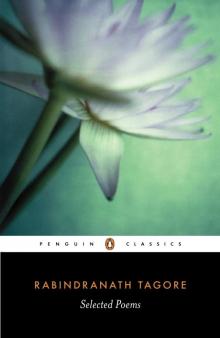 Selected Poems
Selected Poems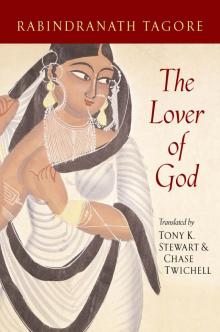 The Lover of God
The Lover of God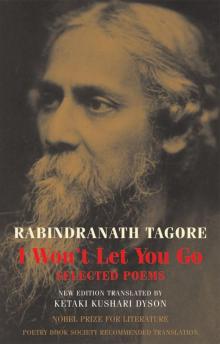 I Won't Let You Go: Selected Poems
I Won't Let You Go: Selected Poems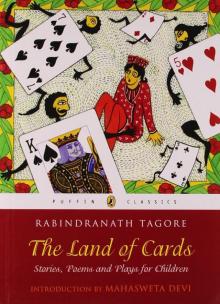 The Land of Cards: Stories, Poems, and Plays for Children
The Land of Cards: Stories, Poems, and Plays for Children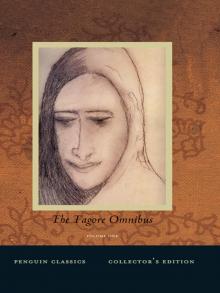 The Tagore Omnibus, Volume One
The Tagore Omnibus, Volume One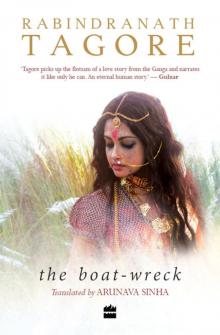 The Boat-wreck
The Boat-wreck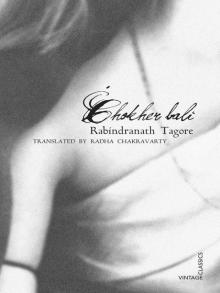 Chokher Bali
Chokher Bali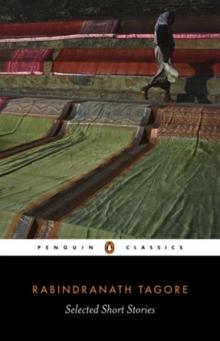 Selected Short Stories
Selected Short Stories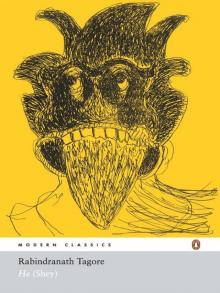 He (Shey)
He (Shey)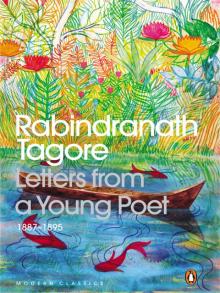 Letters From a Young Poet 1887 1895
Letters From a Young Poet 1887 1895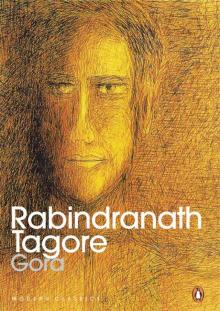 Gora
Gora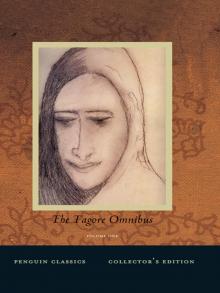 Tagore Omnibus, Volume 1
Tagore Omnibus, Volume 1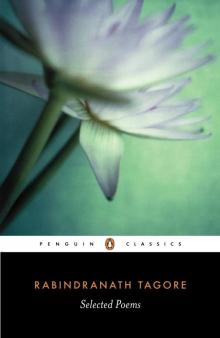 Selected Poems (Tagore, Rabindranath)
Selected Poems (Tagore, Rabindranath)